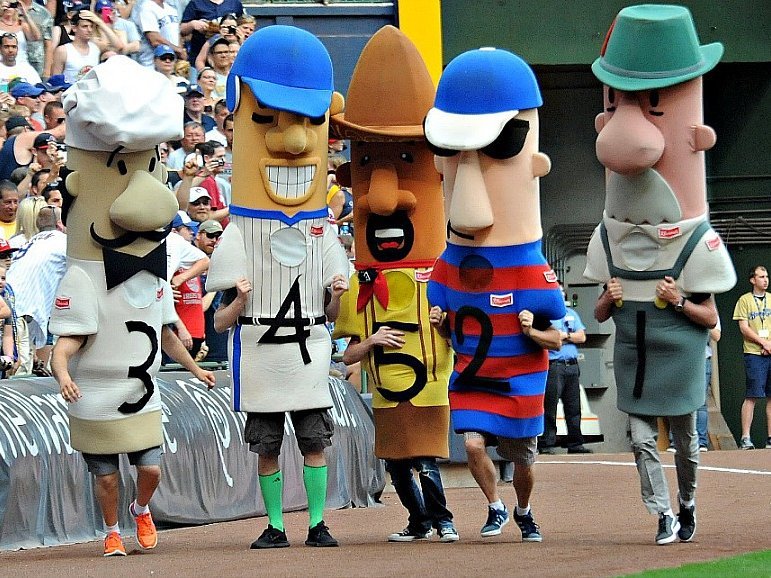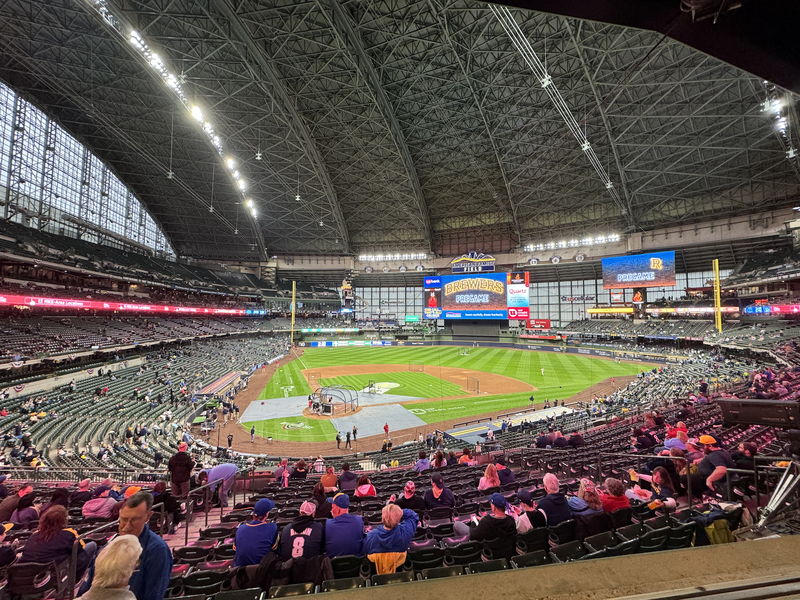Most of the time, ballplayers will tell you that they don't pay attention to what's going on in the stands. It's understandable, especially in Milwaukee, where the players are focused on what's happening between the lines as the Brewers work towards their first division title since 1982.
But when you start playing before near-sellout crowds on a nightly basis in Major League Baseball's smallest market, it's hard not to pay attention.
"Oh, we do, we see it" says infielder Jerry Hairston, Jr., who joined the team about a month ago. "Three million is a big number."
It is a big number. It's also a reflection of the Brewers' success and a vote of confidence to the efforts of the front office which spent the off-season overhauling the roster and stepping up its marketing efforts.
"I've always said that if the fans come out, we have a responsibility to work hard to acquire the best players we can," says general manager Doug Melvin. "I have to trust the fans that they'll come out and when I do, I have to honor that by trying to get the best players."
The Brewers, and more specifically, Milwaukee, have gained a reputation over the last few years as being a team and city with a passionate fan base. The team sold its three millionth ticket this week, crossing that magical attendance threshold for the third time in the last four seasons.
"I knew, having played against the Brewers for a lot of years, that the fan base was awesome," Hairston says. "It seems like every time I came here when I was a Cub or a Red or a Padre that the fans would show up and support their team."
Entering play Thursday, the Brewers ranked ninth in all of baseball with a total attendance of 2,534,074 and an average turnout of 37,265. That figure becomes all the more impressive when you realize that the other teams in the top 10 are Philadelphia, the Yankees, San Francisco, Minnesota, the Angels, St. Louis, Boston, the Cubs and the Dodgers.
Only Minnesota (2,683,642 / 39,465), which is playing its second season at Target Field, is considered a small to mid-sized market.
"Everybody always talks about how this is a small market, a small media market so fans coming to the games coming to the games is a big part of what this team can do to keep players here," says infielder Craig Counsell, who grew up in Milwaukee and spent many days at a half-empty County Stadium while his father worked in the Brewers' community relations department.
Adding to the success has been the Brewers' impressive performance at home. An 8-3 loss Wednesday night marked just the second time this season the team lost consecutive games at Miller Park, where the Brewers are 50-18 – the best home record in baseball.
Both Counsell and Hairston say that it's no coincidence.
"When there are 40,000 people there, there is an atmosphere at the game," Counsell says. "It doesn't matter if it's in April or in September, they're fun games to play in. I think players realize that if we play well, the fans are going to come to the games. Guys appreciate it, they enjoy it. It makes it fun to play here.
Says Hairston: "There is a reason why we've been so successful at home and the fans have a lot to do with that. Obviously, when you have 40,000 people cheering for you every night, it not only boosts the home side but it kind of wreaks havoc on the opposing side, too. It's a great advantage that we have here."
Compared to places like Miami, where empty seats outnumber fans by a 3-to-1 ratio on a nightly basis, Miller Park is a madhouse of sorts. With the push to the postseason underway, the crowds are getting bigger and more vocal.
"You go to Cincinnati, which had a really good team last year, but there were still only 15,000 or 20,000 people in the stands," Counsell says. "It's different here. It’s full most nights. Players definitely notice it."
Whether attendance drives winning or vice versa is a chicken-and-the-egg type of argument but it's certainly one the Brewers are enjoying these days as they sit comfortably atop the National League Central.
"There's a circularity to it, no doubt," says Brewers Vice President of Business Operations. "The fact that we have 3 million-plus fans here gives us the ticket revenue we need to help Doug Melvin stretch some payroll.
There's no doubt that we're not able to make the trades we've made the last several years, whether it's CC Sabathia in 2008 or acquiring (Shaun) Marcum and (Zack) Greinke this off-season. The fans really made those trades, not Doug, because without the support we've had from the fans the last several years, we're not having the revenue to do that."
The goal now is for 3 million to become the benchmark and not, as Schlesinger says, "a news story." If the average attendance holds, the Brewers should finish just shy of the two largest season totals, but still well ahead of many other major-market teams.
"We've got a real good thing going here," Counsell says. "There's no question about it."







